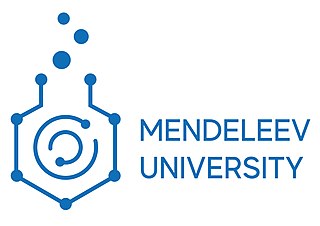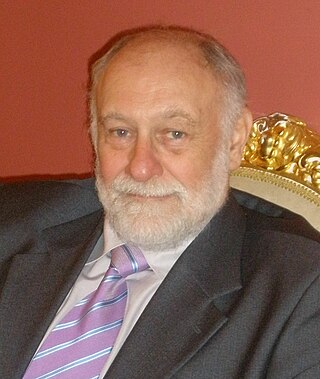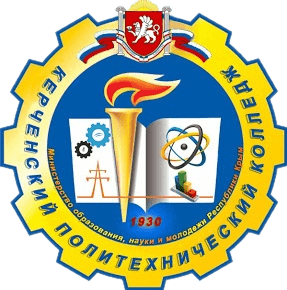
Novocherkassk is a city in Rostov Oblast, Russia, located near the confluence of the Tuzlov and Aksay Rivers, the latter a distributary of the Don River. Novocherkassk is best known as the cultural capital of the Cossacks, and as the official capital of the Don Cossacks. Population: 168,746 (2010 Census); 170,822 (2002 Census); 187,973 (1989 Census).
An institute of technology is an institution of tertiary education that specializes in engineering, technology, applied science, and natural sciences.

The Technical University of Sofia is Bulgaria's largest and foremost academic establishment for higher engineering education. The university is a state-owned entity with academic self-governance.

South Ural State University (SUSU) in Chelyabinsk is an educational institution in Russia. It is among the top-ten of the Russian universities according to the state rating of the Ministry of Education and Science of the Russian Federation, and the largest in Russia in terms of the number of undergraduates.

Peter the Great St. Petersburg Polytechnic University, abbreviated as SPbPU, is a Russian technical university located in Saint Petersburg. Other former names included Peter the Great Polytechnic Institute and Kalinin Polytechnic Institute. The university houses one of the country's most advanced research labs in hydro–aerodynamics. The university's alumni include Nobel Prize winners, such as Pyotr Kapitsa and Zhores Alferov, physicists and atomic weapon designers such as Yulii Khariton, Nikolay Dukhov, Abram Ioffe, Aleksandr Leipunskii, and Yakov Zeldovich, aircraft designers and aerospace engineers, such as Yulii Khariton, Oleg Antonov, Nikolai Polikarpov, and Georgy Beriev, and chess grandmasters, such as David Bronstein. The university offers academic programs at the Bachelor, Master's, and Doctorate degree levels. SPbSPU consists of structural units called Institutes divided into three categories: Engineering Institutes, Physical Institutes, and Economics and Humanities Institutes. In 2022, the university was ranked #301 in the world in the Times Higher Education (THE) World University Rankings, #393 in QS World University Rankings, #679 in Best Global Universities Rankings by U.S. News & World Report, and #1,005 by Center for World University Rankings.

Donetsk National Technical University is the biggest and oldest higher education establishment in Donbas, founded in 1921. In its early years, it was attended by Nikita Khrushchev.

MIREA — Russian Technological University is The Federal State Budget Educational Institution of Higher Education «MIREA — Russian Technological University». It is a higher educational institution in Moscow, Russia, which is an educational, research and innovation complex. It was ranked # 1,960 globally in 2023 by US News & World Report.

D. Mendeleev University of Chemical Technology of Russia (MUCTR) — is a federal state budgetary higher educational institution in Moscow, and is the largest Russian center for education and research in the field of chemical technology. The history of MUCTR can be traced back to the Moscow Industrial School initially founded in 1898. The university acquired its current name and status in 1992 with its Moscow campus mainly located on Miusskaya Square and in Tushino. The university's other two branches are situated in Novomoskovsk and Tashkent (Uzbekistan). In 2023, the university was ranked # 1,955 by US News & World Report.

Omsk State Agrarian University is a public agricultural higher education institution located in the city of Omsk (Russia). The university has a 1133 hectares territory, and a green campus space located within the city. Omsk SAU consists of the main university located in Omsk, its branch in the city of Tara, and the University College of Agribusiness.

The Dnipro University of Technology, abbreviated in Ukrainian as NTU DP is located in Dnipro, the third most populous city in Ukraine. It was founded in 1899 as the Yekaterinoslav Higher Mining School. The task of the university then was to provide the mining industry with highly qualified specialists, a goal that has continued to direct the university's leadership right up to the present day, although in recent years its academic offer has developed beyond the confines of mining-related subjects. Currently, its structure consists of nine faculties. During the Soviet era, the polytechnic was one of the country's top specialised institutions of higher education. It is ranked as one of Ukraine's best universities in many rankings and today attracts a large number of foreign students.

Sumy State University (SumDU) is a higher educational institution in Sumy, Ukraine. It enrolls about 12,000 students pursuing pre-undergraduate, undergraduate, specialist, and master degrees in 55 majors and 23 fields. About 1,900 foreign students represent almost 50 countries worldwide.

Yuri Vladimirovich Trushin is Russian physicist and professor of Theoretical Physics of semiconductors. He is a member of the Russian Academy of Natural Sciences, and has been recognized as an Honored Scientist of the Russian Federation.

Moscow State University of Civil Engineering or MGSU is a higher education institution located in Moscow, Russia. It is located on Yaroslavl Highway in Yaroslavsky district.

Perm National Research Polytechnic University is a multidisciplinary higher educational institution that provides training for scientific, technical, technological, economic, managerial, social and humanitarian areas and specialties for enterprises and organizations of the Western Ural and Russia. The university is located in the city of Perm, Perm Krai, Russia. Its rector is Anatoly Таshkinov.

Kerch Polytechnic College is a higher education institution in Kerch, Crimea. It trains personnel in 16 specialties, and about 300 students enroll for first-year studies at the college annually.

Pskov State University is a public university in the Pskov Region of Russia. It is one of the 33 flagship universities in Russia. Pskov SU was established in 2010 by several other educational institutions in the region.

Turin Polytechnic University in Tashkent is a non-profit public higher education institution in Uzbekistan. Turin Polytechnic University in Tashkent was established in 2009 in a partnership with Politecnico di Torino, Italy. TTPU's main objective is to prepare specialists for the automotive, mechanical engineering, electrical industries and companies in the field of civil engineering and construction, and the power industry, in accordance with the educational programs adopted in collaboration with Politecnico di Torino, Italy.

Novgorod State Polytechnic Institute is a Higher education institution in Veliky Novgorod, founded in 1961 to train engineering and technical personnel. Reorganized in 1993 by joining the Novgorod State University.
Volgograd State Technical University is a public university located in Volgograd, Russia. It was founded in 1930.

Ivanovo-Voznesensk Polytechnic Institute was a higher-education institution in the city of Ivanovo-Voznesensk in Russia. Established on the basis of the evacuated Riga Polytechnical Institute, it operated from 1918 to 1930; in 1930 it was liquidated, and branch universities were set up on the basis of individual faculties.





































